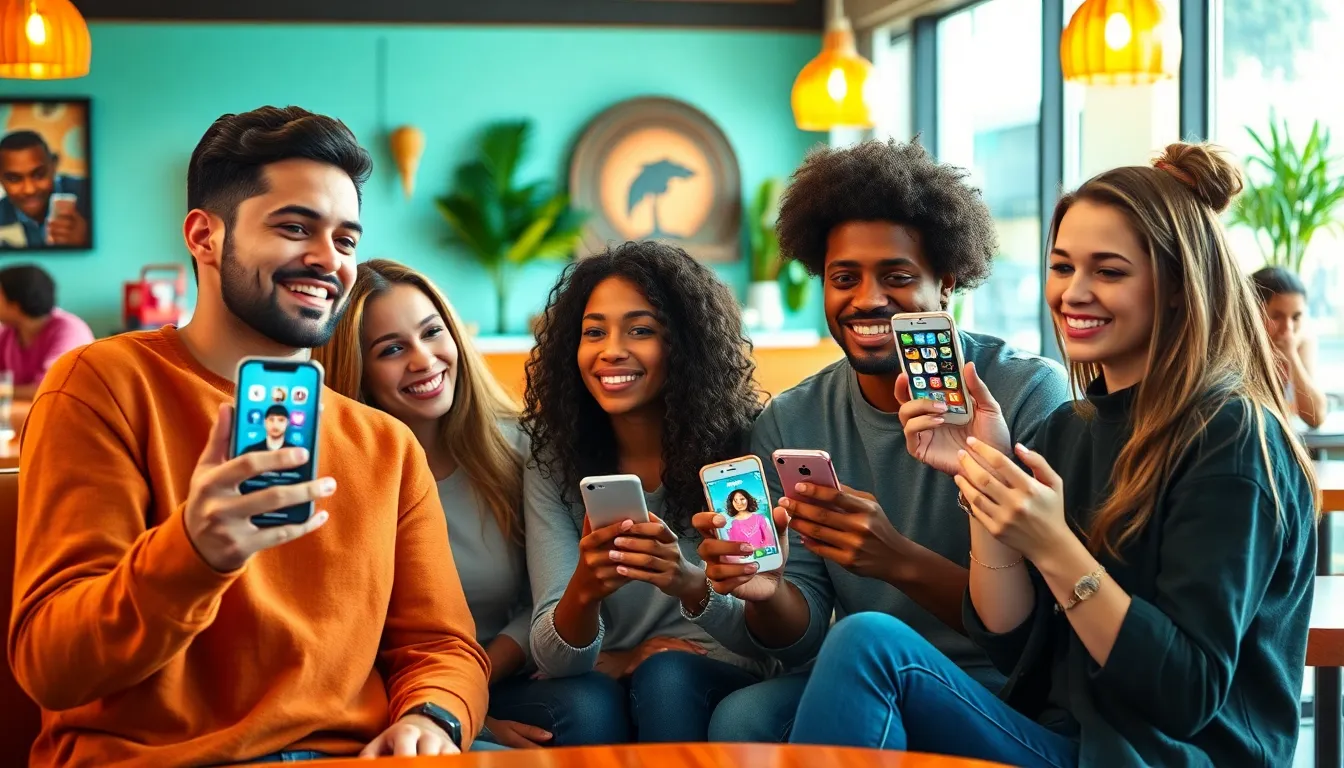Table of Contents
ToggleIn today’s digital landscape, social media apps have transformed the way people connect and communicate. With billions of users worldwide, these platforms shape opinions, influence trends, and foster relationships. From sharing life updates to discovering new interests, social media has become an integral part of daily life.
As technology evolves, so do the features and functionalities of these apps. Users can now engage in real-time conversations, share multimedia content, and even shop directly through their favorite platforms. Understanding the dynamics of social media apps is essential for anyone looking to navigate this vibrant online world effectively.
Overview of Social Media Apps
Social media apps serve as platforms for communication, interaction, and information sharing. They connect billions of users worldwide, allowing individuals to engage with content and each other in real-time. Users create, share, and exchange various types of media, including text, photos, videos, and live streams.
The most prominent social media apps include:
- Facebook: An extensive platform enabling users to build profiles, connect with friends, join groups, and share updates.
- Instagram: A visual-focused app centered around photo and video sharing, featuring stories and reels for ephemeral content.
- Twitter: A microblogging platform for sharing short messages (tweets) that promote real-time discussions and updates.
- TikTok: A video-sharing app where users create and discover short-form videos, often featuring trending challenges and sounds.
- Snapchat: An app focused on temporary content with features like stories and direct messaging, emphasizing casual communication.
These apps offer diverse functionalities, catering to different preferences and user needs. The evolution of social media apps drives trends in communication and marketing, reshaping how information spreads across society.
Engagement metrics and data analytics tools help users and businesses assess their performance on these platforms. Understanding user behavior and preferences leads to improved strategies for content creation and audience interaction. Social media apps continue to evolve, incorporating new technologies to enhance connectivity and user experience.
Popular Social Media Apps

Social media apps play a critical role in modern communication. Each app serves specific user needs, fostering unique interactions and content sharing.
Facebook dominates the social media landscape, boasting over 2.8 billion monthly active users. This platform facilitates connections among friends, family, and communities through features such as posts, groups, and events. Businesses utilize Facebook to engage with audiences through targeted advertising and community-building tools. Analytics help assess engagement levels, guiding content strategies and improving user outreach.
Instagram focuses on visual content, with over 1 billion monthly active users. The platform allows users to share photos and videos, using features like Stories and IGTV for ephemeral and longer content. Brands leverage Instagram for marketing through captivating visuals and influencer partnerships, driving engagement. Insights provided by the platform enable businesses to refine their strategies and track audience interactions.
Twitter emphasizes real-time communication, with around 450 million monthly active users. Tweets, consisting of short text updates, facilitate instant conversations on various topics. Trending hashtags and Twitter threads promote engagement and community discussions. Organizations use Twitter for customer service, announcements, and brand awareness. Analytics help in understanding audience preferences and enhancing content impact.
TikTok
TikTok has rapidly gained popularity, attracting over 1 billion monthly active users. The app allows users to create and share short videos set to music, often featuring creative editing and effects. TikTok’s algorithm promotes discovery, enabling viral trends and challenges that engage users. Brands increasingly utilize TikTok for marketing campaigns, leveraging user-generated content to connect with younger audiences. Data analytics assist in measuring campaign success and audience interaction.
Features of Social Media Apps
Social media apps offer a variety of features that enhance user interaction, creativity, and security. Key attributes include user engagement methods, content creation tools, and customizable privacy settings.
User Engagement
User engagement is crucial for social media apps. Interactive features like likes, comments, shares, and polls foster immediate responses and conversations. Notable aspects include:
- Real-Time Interaction: Users can participate in live chats or video streams, facilitating direct conversations.
- Groups and Communities: Platforms like Facebook enable users to create and join groups based on shared interests, encouraging discussions and connections.
- Trending Topics: Twitter showcases trending hashtags, allowing users to follow and participate in current events and conversations.
Content Creation Tools
Content creation tools empower users to express themselves and share their experiences. Essential features include:
- Image and Video Editing: Most apps offer filters, templates, and editing options to enhance visual content quality.
- Stories Format: Temporary posts on platforms like Instagram and Snapchat engage audiences with quick, visual updates.
- Live Streaming: Users can broadcast live events, share moments in real-time, and interact with viewers instantaneously.
Privacy Settings
- Customization Options: Users can tailor who sees their posts, limiting access to friends or specific groups.
- Account Security: Two-factor authentication adds an extra layer of protection against unauthorized access.
- Content Control: Users can manage their data, deciding what’s shared and how, which builds trust within the platform and ensures a safer experience.
Impact of Social Media Apps
Social media apps greatly influence various aspects of life, shaping how individuals communicate and interact. Their pervasive presence impacts mental health, social interactions, and overall societal dynamics.
Mental Health Considerations
Social media apps may significantly affect mental health, both positively and negatively. Research indicates that excessive use can lead to anxiety, depression, and low self-esteem among users, particularly teens and young adults. One study found that individuals spending more than two hours daily on social media sites report higher levels of psychological distress. Conversely, these apps can also foster community support and camaraderie. Users often share experiences and find encouragement through online support groups, which may benefit mental well-being.
Social Interaction
Social media apps transform traditional social interaction by enabling instantaneous communication across geographical boundaries. They allow users to connect with friends and family, regardless of distance, facilitating ongoing relationships. Platforms like Facebook provide tools for organizing events and maintaining connections, while Instagram allows users to share life moments visually. Moreover, social media fosters new friendships and collaborations, often linking individuals with similar interests. These platforms also bolster user engagement through real-time updates, discussions, and content sharing, which reshapes how individuals build and maintain social circles.
Social media apps have undeniably transformed the way people communicate and connect. With their vast user bases and diverse functionalities, these platforms play a crucial role in shaping opinions and trends. They provide unique opportunities for engagement and creativity while also presenting challenges related to mental health and privacy.
Understanding the dynamics of social media is essential for navigating this ever-evolving landscape. As technology continues to advance, users and businesses alike must adapt their strategies to maximize the benefits of these platforms. Embracing the positive aspects while remaining mindful of the potential pitfalls will lead to a more fulfilling online experience.





